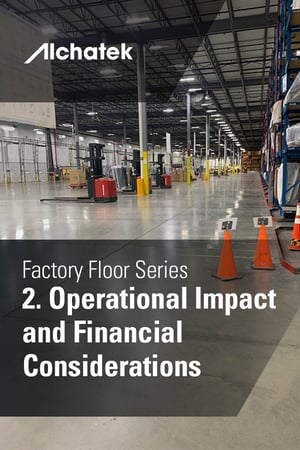
 The previous article in this series introduced the top 10 concerns that plant and factory managers face when dealing with unstable or sunken slabs. This installment will focus on the operational and financial implications of slab instability, two aspects that are often at the forefront of managerial concerns. Understanding these implications is crucial for making informed decisions on how to address the issue effectively.
The previous article in this series introduced the top 10 concerns that plant and factory managers face when dealing with unstable or sunken slabs. This installment will focus on the operational and financial implications of slab instability, two aspects that are often at the forefront of managerial concerns. Understanding these implications is crucial for making informed decisions on how to address the issue effectively.
Operational Downtime: The Hidden Costs
Operational downtime is a term that sends shivers down the spine of any plant or factory manager. When production lines halt or slow down due to unstable slabs, the repercussions are immediate and far-reaching. Not only does this downtime affect the output, but it also has a cascading effect on other operational aspects.
Direct Impact on Revenue
Every minute that a production line is down translates to lost revenue. For industries where production runs 24/7, even a few hours of downtime can result in significant financial losses.
Supply Chain Disruptions
Operational downtime doesn't just affect the plant or factory in question; it also has a ripple effect on the entire supply chain. Delays in production can lead to missed delivery deadlines, affecting customer relationships and potentially incurring contractual penalties.
Resource Allocation
When production halts, labor resources are often left idle. This idle time is a hidden cost that adds to the financial burden of operational downtime. Managers may need to reallocate staff temporarily, but this is often easier said than done, especially in specialized industrial settings.
Reputational Damage
Frequent downtimes can tarnish the reputation of a plant or factory, making it less competitive in the market. In the age of social media and instant news, word of such operational inefficiencies can spread quickly, affecting future business opportunities.
Equipment Damage: A Vicious Cycle
Unstable or sunken slabs can wreak havoc on the heavy machinery and automated systems that are the backbone of industrial operations. The issue here is twofold: the immediate damage to the equipment and the long-term costs associated with repairs and replacements.
Misalignment Issues
Heavy machinery often requires precise alignment for optimal performance. Even a slight unevenness in the floor can lead to misalignment, affecting the efficiency and lifespan of the equipment.
Wear and Tear
Uneven floors can accelerate the wear and tear on mobile equipment like forklifts, trolleys, and automated guided vehicles (AGVs). This increased rate of degradation leads to more frequent maintenance cycles and, ultimately, earlier replacement of these assets.
Secondary Damage
In some cases, the instability of slabs can lead to vibrations or shocks that propagate to other parts of the machinery. This secondary damage can be even more costly to repair and may require specialized expertise.
Calibration and Quality
Many industrial processes require calibrated equipment for quality control. If machinery is misaligned due to uneven floors, recalibration is necessary, adding another layer of operational complexity and cost.
Repair Costs: The Financial Burden
Addressing unstable or sunken slabs is not just about fixing the floor; it's about managing a complex web of interconnected costs. These costs can escalate quickly, especially if the issue has led to secondary problems like equipment damage or utility disruption.
Immediate Repair Costs
The most obvious cost is the immediate expense of repairing the unstable slab. This can vary widely depending on the extent of the problem and the repair method chosen.
Indirect Costs
Beyond the direct costs of repair, managers must consider the indirect costs, such as operational downtime, labor reallocation, and potential supply chain disruptions. These can often exceed the immediate repair costs.
Long-Term Financial Planning
Frequent repairs can strain the maintenance budget, affecting the plant's long-term financial planning. This can lead to cuts in other essential areas, such as R&D or workforce training, which can have long-term repercussions on the competitiveness of the plant.
A Proactive Approach
Operational downtime, equipment damage, and repair costs are intricately linked concerns that plant and factory managers must navigate when dealing with unstable or sunken slabs. Each of these issues feeds into the other, creating a complex web of operational and financial challenges.
However, understanding these implications is the first step in addressing them effectively. In the next installment of this series, we will explore the safety, regulatory, and environmental concerns associated with slab instability. This will provide a comprehensive view of the issue, allowing managers to make informed decisions on how best to maintain the integrity of their industrial floors.
By taking a proactive approach to slab maintenance and repair, managers can mitigate these operational and financial risks. Whether it's through regular inspections, employing advanced repair methods like polyurethane solutions, or investing in preventive measures, the goal is to maintain a stable foundation upon which the entire industrial operation rests.


